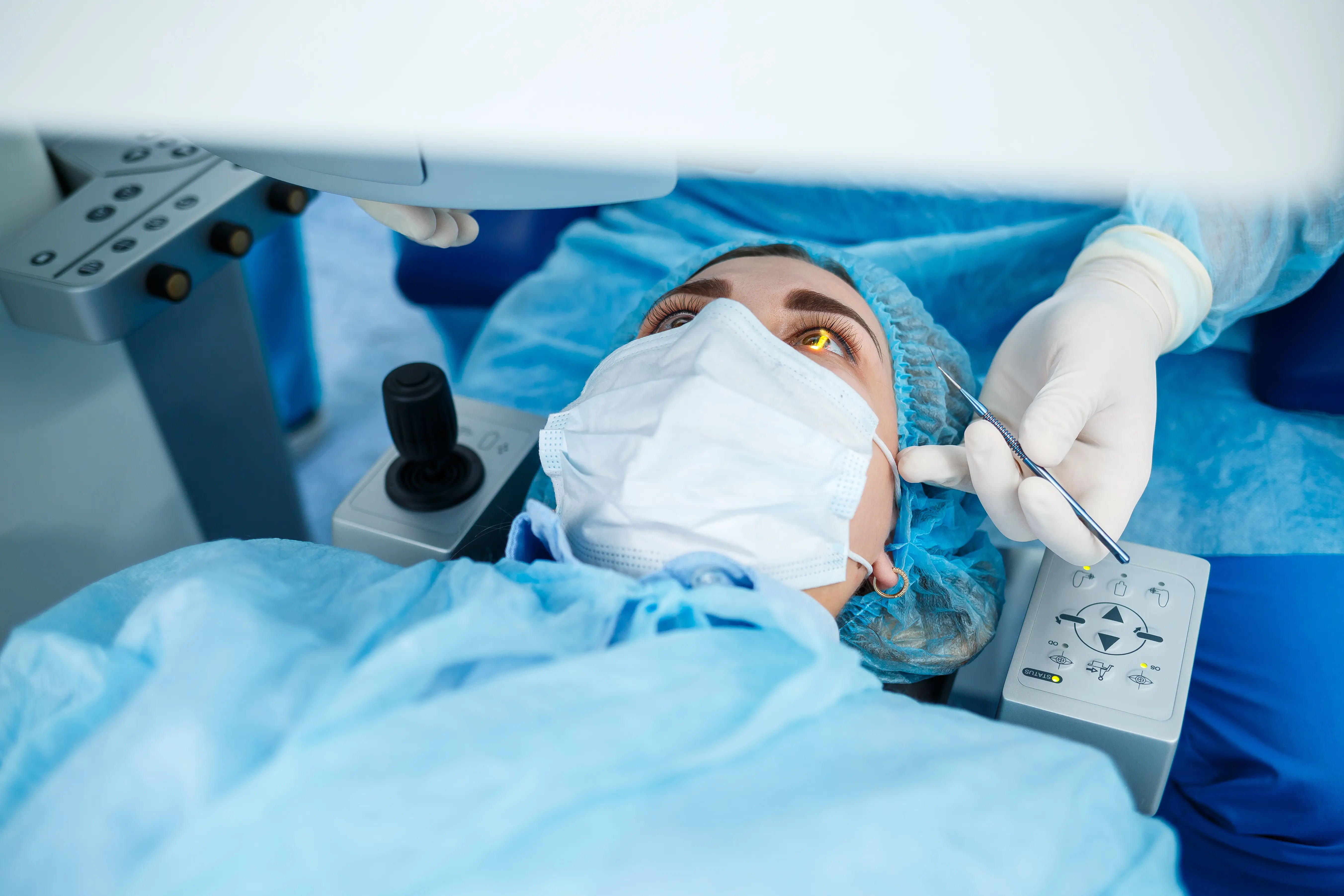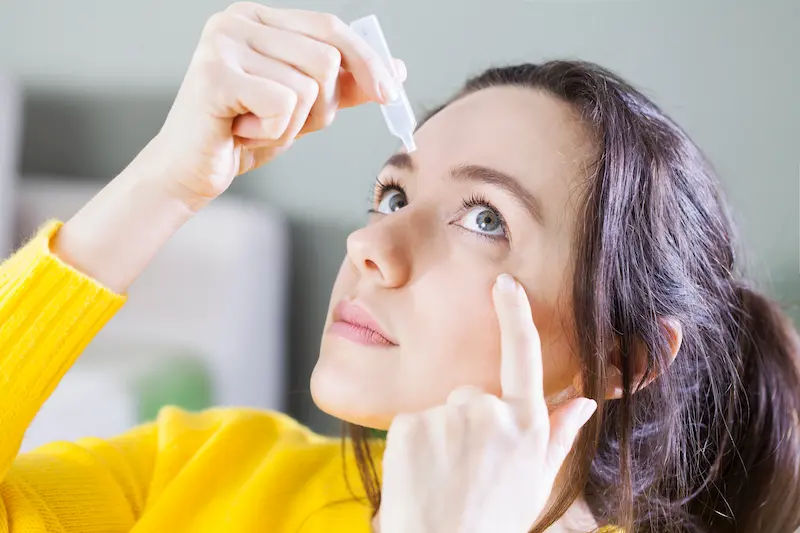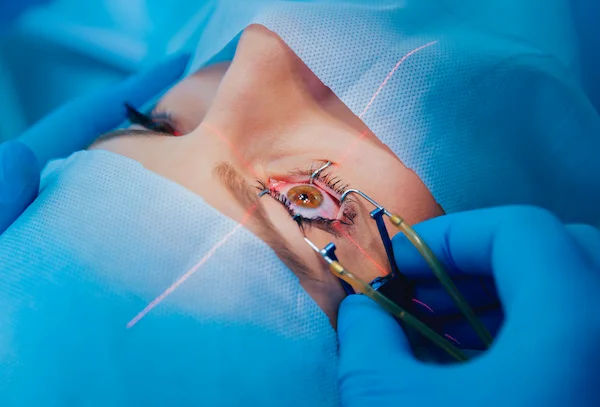How To Reduce Eye Strain?
Learn simple and effective ways to reduce eye strain. Discover tips like proper lighting, regular breaks, eye exercises, and lifestyle changes that can help ease discomfort and protect your eyes from digital fatigue.

Written by
Last updated on 3rd Jul, 2025
In today’s digital world, many of us spend hours staring at screens—whether it’s a computer, smartphone, or television. This can lead to eye strain, a common condition that causes discomfort, fatigue, and even headaches. The good news is that with a few simple changes, you can reduce eye strain and keep your eyes healthy.
What is Eye Strain?
Eye strain (also called asthenopia) occurs when your eyes get tired from prolonged use, such as reading, driving, or looking at digital screens. While it’s usually not serious, it can be uncomfortable and affect your productivity and overall well-being.
Common Symptoms of Eye Strain
Tired, sore, or burning eyes
Dryness or excessive watering
Blurred or double vision
Sensitivity to light
Headaches
Difficulty focusing
Get Your Symptoms Checked By An Ophthalmologist
What Causes Eye Strain?
Several factors contribute to eye strain, including:
1. Prolonged Screen Time: Staring at digital devices for long hours reduces blinking, leading to dryness.
2. Poor Lighting: Too much or too little light can force your eyes to work harder.
3. Improper Screen Distance: Holding screens too close or at the wrong angle strains eye muscles.
4. Uncorrected Vision Problems: If you need glasses or contacts but don’t wear them, your eyes have to work harder.
5. Lack of Breaks: Continuous focus without rest tires the eyes.
6. Dry Air: Air conditioning, fans, or heating can dry out your eyes.
How to Reduce Eye Strain?
Here are some ways to reduce eye strain:
1. Follow the 20-20-20 Rule
A simple way to give your eyes a break every 20 minutes, look at something 20 feet away for 20 seconds. This helps relax your eye muscles and reduces fatigue.
2. Adjust Your Screen Settings
Brightness: Match your screen brightness to the surrounding light.
Text Size: Increase font size to avoid squinting.
Blue Light Filter: Use "night mode" or blue light glasses to reduce glare.
3. Improve Your Workspace Lighting
Avoid glare from windows or overhead lights.
Use soft, indirect lighting instead of harsh fluorescent lights.
4. Blink More Often
Blinking keeps your eyes moist. Since we blink less while using screens, make a conscious effort to blink regularly.
5. Use Artificial Tears
If your eyes feel dry, over-the-counter lubricating eye drops can help. Avoid drops that "remove redness," as they may contain irritants.
6. Adjust Your Screen Position
Keep your screen 20-24 inches from your eyes.
Position the top of the screen at or slightly below eye level.
7. Take Regular Breaks
Stand up, stretch, and walk around every hour to relax your eyes and body.
8. Get Regular Eye Check-ups
If eye strain persists, you may need glasses or an updated prescription. An eye exam can detect underlying issues like astigmatism or presbyopia.
Lifestyle Changes for Healthier Eyes
Taking care of your eyes through simple lifestyle changes can significantly improve your vision and reduce the risk of eye strain, fatigue, and other common eye problems.
1. Eat Eye-Friendly Foods
Carrots, spinach, and kale (rich in Vitamin A and lutein)
Fish (omega-3 fatty acids help with dry eyes)
Nuts and seeds (Vitamin E supports eye health)
2. Stay Hydrated
Drinking enough water prevents dry eyes.
3. Exercise Your Eyes
Try simple eye exercises:
Palming: Rub your hands together to warm them, then gently cup them over closed eyes for a minute.
Focus Shifting: Alternate focus between a near and far object.
When to See a Doctor
Most eye strain improves with rest and adjustments, but consult an eye specialist if you experience:
Severe or persistent headaches
Double vision that doesn’t go away
Eye pain or redness
Sudden vision changes
Conclusion
Eye strain is common but manageable. By making small changes—like taking breaks, adjusting screen settings, and keeping your eyes hydrated—you can protect your vision and stay comfortable. Remember, your eyes work hard for you; give them the care they deserve!
Would you like personalized advice? Schedule an eye check-up today and keep your vision clear and healthy!
Consult Top Ophthalmologists
Get Your Symptoms Checked By An Ophthalmologist

Dr Ranojit Basu
Ophthalmologist
24 Years • MBBS, DNB Ophthalmology, Diploma in Ophthalmic Medicine and. Surgery
Kolkata
Titanium Eye Care, Kolkata

Dr. Anupa Gulati
Ophthalmologist
25 Years • MBBS, Dip in Ophthalmology
New Delhi
Visitech Eye Centre Green Park, New Delhi

Dr. Rajeev Gupta
Ophthalmologist
24 Years • MBBS, MS (Ophthalmology)
Ghaziabad
Om Eye & Gynae Centre, Ghaziabad

Dr. Smriti Nagpal
Ophthalmologist
13 Years • MBBS , MS (Ophthalmology)
New Delhi
Sunshine mediclinic, New Delhi

Dr. Mridula V Amarnath
Ophthalmologist
12 Years • MBBS,MS (Opthalomology)
Bengaluru
Apollo Medical Center, Marathahalli, Bengaluru
Consult Top Ophthalmologists

Dr Ranojit Basu
Ophthalmologist
24 Years • MBBS, DNB Ophthalmology, Diploma in Ophthalmic Medicine and. Surgery
Kolkata
Titanium Eye Care, Kolkata

Dr. Anupa Gulati
Ophthalmologist
25 Years • MBBS, Dip in Ophthalmology
New Delhi
Visitech Eye Centre Green Park, New Delhi

Dr. Rajeev Gupta
Ophthalmologist
24 Years • MBBS, MS (Ophthalmology)
Ghaziabad
Om Eye & Gynae Centre, Ghaziabad

Dr. Smriti Nagpal
Ophthalmologist
13 Years • MBBS , MS (Ophthalmology)
New Delhi
Sunshine mediclinic, New Delhi

Dr. Mridula V Amarnath
Ophthalmologist
12 Years • MBBS,MS (Opthalomology)
Bengaluru
Apollo Medical Center, Marathahalli, Bengaluru




